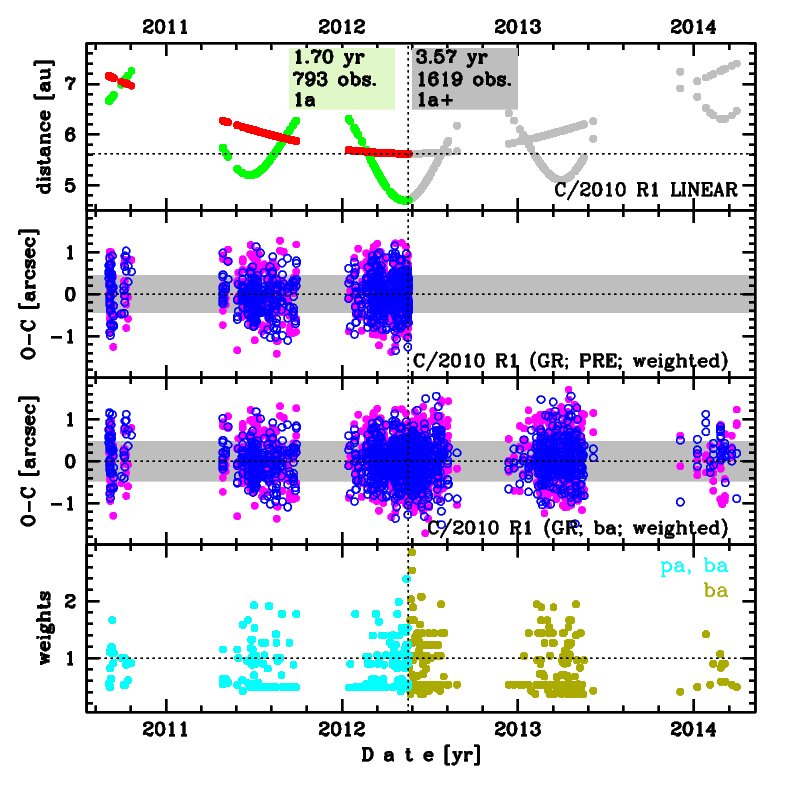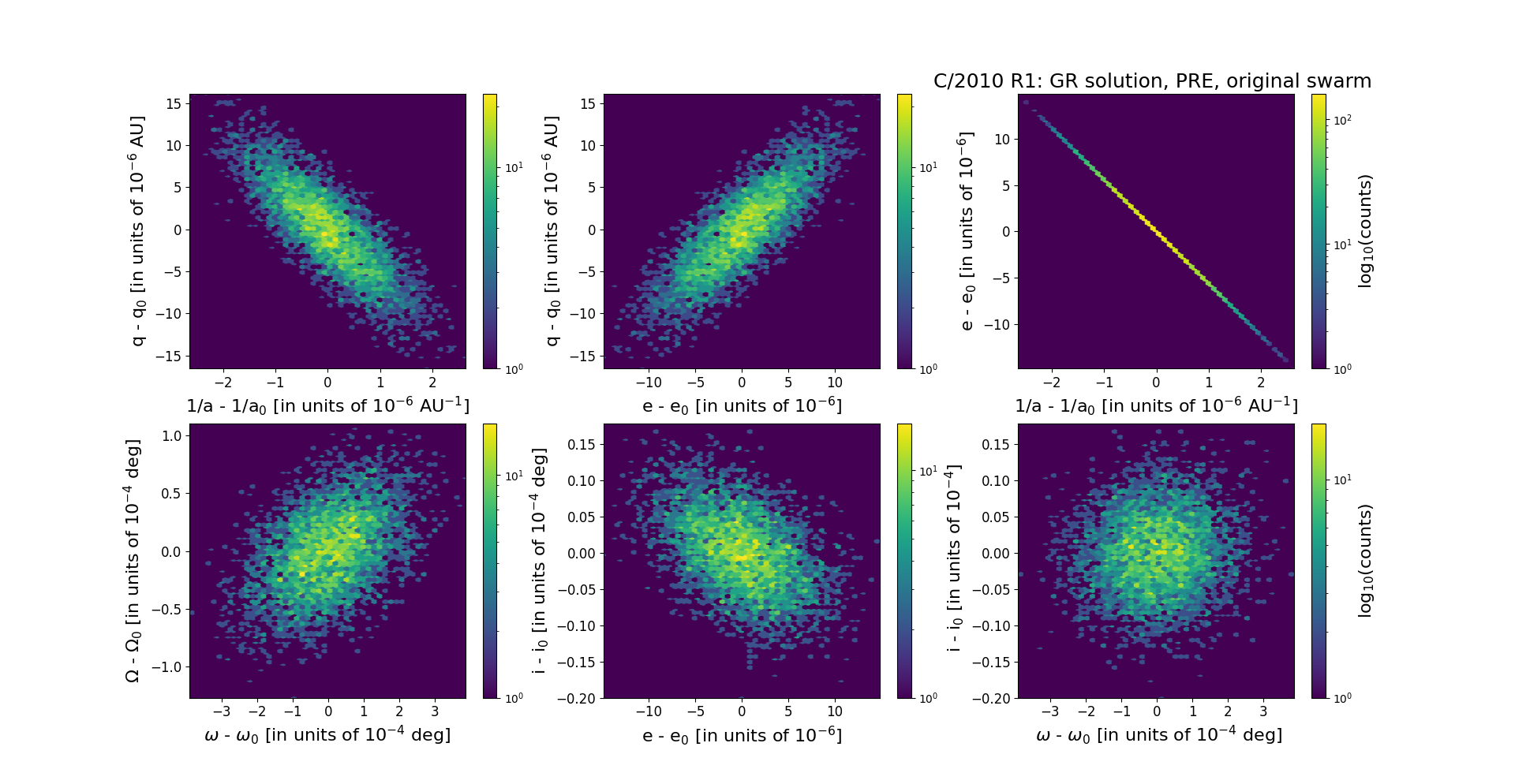C/2010 R1 LINEAR
more info
Comet C/2010 R1 was discovered on 4 September 2010 and next observed 3.6 yr in a range of heliocentric distances: 7.15 au – 5.621 au (perihelion) – 7.40 au. At the moment of discovery, it was 1.7 yr before perihelion passage (see figure).
Comet had its closest approach to the Earth on 10 May 2012 (4.694 au, eight days before perihelion).
This Oort spike comet suffers a tiny planetary perturbations during its passage through the planetary system.
See also Królikowska and Dones 2023 and Królikowska and Dybczyński 2017.
Comet had its closest approach to the Earth on 10 May 2012 (4.694 au, eight days before perihelion).
This Oort spike comet suffers a tiny planetary perturbations during its passage through the planetary system.
See also Królikowska and Dones 2023 and Królikowska and Dybczyński 2017.
| solution description | ||
|---|---|---|
| number of observations | 793 | |
| data interval | 2010 09 04 – 2012 05 18 | |
| data arc selection | data generally limited to pre-perihelion (PRE) | |
| range of heliocentric distances | 7.15 au – 5.62 au (perihelion) – 5.62 au | |
| detectability of NG effects in the comet's motion | NG effects not determinable | |
| type of model of motion | GR - gravitational orbit | |
| data weighting | YES | |
| number of residuals | 1541 | |
| RMS [arcseconds] | 0.45 | |
| orbit quality class | 1a | |
| orbital elements (barycentric ecliptic J2000) | ||
|---|---|---|
| Epoch | 1705 08 22 | |
| perihelion date | 2012 05 18.57210190 | ± 0.00089451 |
| perihelion distance [au] | 5.62133966 | ± 0.00000491 |
| eccentricity | 0.99975430 | ± 0.00000432 |
| argument of perihelion [°] | 114.531984 | ± 0.000107 |
| ascending node [°] | 343.648283 | ± 0.000034 |
| inclination [°] | 156.925528 | ± 0.000005 |
| reciprocal semi-major axis [10-6 au-1] | 43.71 | ± 0.77 |
| file containing 5001 VCs swarm |
|---|
| 2010r1pa.bmi |

Upper panel: Time distribution of positional observations with corresponding heliocentric (red curve) and geocentric (green curve) distance at which they were taken. The horizontal dotted line shows the perihelion distance for a given comet whereas vertical dotted line — the moment of perihelion passage.
Middle panel(s): O-C diagram for a given solution (sometimes in comparison to another solution available in CODE), where residuals in right ascension are shown using magenta dots and in declination by blue open circles.
Lowest panel: Relative weights for a given data set(s).
Middle panel(s): O-C diagram for a given solution (sometimes in comparison to another solution available in CODE), where residuals in right ascension are shown using magenta dots and in declination by blue open circles.
Lowest panel: Relative weights for a given data set(s).
